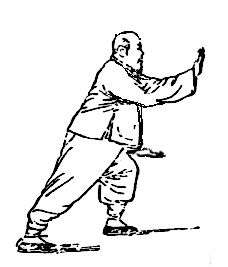Jin Gang
Green Belt
- Joined
- Jul 15, 2007
- Messages
- 123
- Reaction score
- 19
I agree with Flying Crane, but I'm not so sure that a lot of changes are for the good of the art: I think they are based on a superficial understanding of the essences, done to hasten the acquisition of students.
However, I don't assume that "no change" always beats "change", just as I don't assume the opposite. Logically, who can say that if an art hasn't changed in generations, it is because it has reached the pinnacle of its value/precision/whatever? Humans are not perfect, and perhaps something has been overlooked. People are people, and masters are neither gods nor immortals. Perhaps someone with a certain point of view can see something a different way.
Of course, Yang Cheng Fu was right in asserting that additions or deletions should not be made rashly. However, if one has a clear, respectful understanding of the essences and makes changes that still respect those essences, if those changes could withstand critical examination in terms of martial effectiveness (for example), then wouldn't they be valid?
Sorry guys, but logically, I can't abide the idea that "if changes could be made, they'd have been made by now". Did Yang's ancestors say that? Did the first person to systematize martial arts say that? If not, then why should the changes stop with YCF?
Or should we define terms: changes to essences are bad, but variations on expressions of those essences could be good if they withstand scrutiny and still respect those essences?
Right. The Chinese culture (and the Japanese culture as well), tends to idolize ancestors. Everyone is going to SAY that their ancestors were geniuses who were perfect, and that they themselves are unworthy of being called their equals, and would never change the traditions. But things change all the time. Yang Cheng Fu's taijiquan was only two generations old when he received it, and it had clearly changed already, between his father and his uncle, not to mention the changes his grandfather made to the Chen style he learned, and the changes the Chen family made to the shaolin and other methods they inherited. Martial arts change, with every person and every generation, it is inevitable, regardless of what propriety towards one's ancestors requires in terms of etiquette. Sometimes the change happens in a significant or deliberate way, sometimes in a slow drifting way. There is no judgement on that fact, it is not necessarily good or bad. We should honor those who came before us by carefully examing and considering everything they have to teach. All we can do is study, test, and see what works. Sometimes someone finds something new works better for them than the way of their ancestors. Sometimes the old way gets changed without being understood, and that is a shame.



